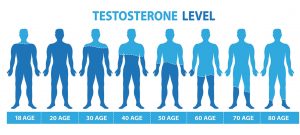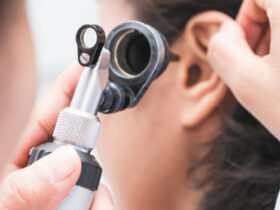By Dr. Melissa (Mel) Irvine, DNP – Clinical Sexologist – Specializes in Sexual Medicine and Beauty
 Testosterone replacement therapy, a vital treatment for restoring balance to declining hormone levels, is being vastly underused.
Testosterone replacement therapy, a vital treatment for restoring balance to declining hormone levels, is being vastly underused.
Besides the stigma surrounding hormone replacement therapy, one of the primary reasons for this is that many people have undiagnosed low testosterone levels because their doctors fail to run all the important tests.
The traditional method for detecting testosterone levels measures the total testosterone in the blood. However, this provides only a portion of the information about testosterone and, therefore, provides only a tiny snippet of information about someone’s health.
In order to fully understand someone’s hormone levels, it’s important to look deeper than the total testosterone level, especially if their symptoms suggest there’s something that you’re missing.
Total Testosterone Vs. Free Testosterone
Your total testosterone levels are the amount of testosterone found in the blood. However, this can be broken up further.
Around 98% of testosterone is bound to albumin or sex hormone binding globulin (SHBG), and these are called “bound testosterone.”
The remaining 2% of testosterone is referred to as “free testosterone” because it is unbound. It is this free testosterone that is responsible for many of the actions we associate with testosterone, including secondary sex characteristics like a deep voice and body hair.
Free testosterone is also what enters specific cells and promotes reproduction, such as in the muscles and bones.
The Problem with Total Testosterone
Most providers will use a total testosterone test to gauge testosterone levels in the body, but this doesn’t consider that only the free testosterone is what contributes to the symptoms commonly associated with low testosterone. Those with excessive bondage to albumin or SHBG may show normal total testosterone levels, but low free testosterone.
For example, a young male patient with total testosterone levels of 300-500 may be brushed aside since their testosterone levels fall within the normal range. Yet, a closer investigation shows that their free testosterone is below 10 when most men thrive on levels well into the double digits.
The same is shown with women, who have normal total testosterone of 20, but may have free testosterone as low as 0.01.
When doctors fail to listen to their patient’s symptoms and further explore their hormone levels, patients continue struggling to accomplish their everyday tasks.
It comes as no surprise that sleep problems, anxiety, depression, low energy, low libido, brain fog/difficulty concentrating, weight gain, and mood changes are becoming more common. These symptoms result from hormone imbalances, and too many doctors are not adequately measuring hormone levels.
A Rise in Symptoms
As doctors continue to avoid addressing hormone levels, there has been an understandable rise in preventable symptoms.
Just looking at testosterone, low levels have been reported with symptoms such as:
. anger
. anxiety
. hostility
. overall irritability
. depression
Low testosterone can also increase stress levels, which then impacts cardiovascular health.
These symptoms make it challenging to enjoy daily life, vastly decreasing someone’s quality of life.
By remedying low testosterone levels, we not only improve those characteristics that we typically associate with testosterone, such as libido, muscle mass, and bone mass, but we also have a way to improve the well-being of patients that are mentally suffering because their body cannot produce enough of the hormones that they need to be happy and calm.
These patients may find that they don’t need antidepressants or anti-anxiety drugs, but instead, an evaluation of their hormone levels to see if there are any imbalances.
Using Testosterone to Monitor Overall Health
Testosterone levels can also provide valuable insight into a patient’s health.
For example, testosterone levels can decrease for many reasons, not just age. In fact, in many cases, it might not be age itself that causes testosterone to decline, but the changes in health that occur with age.
Some whole-body factors that can cause a decrease in testosterone include:
. high blood pressure
. high cholesterol levels
. using illegal drugs
. being overweight or obese
. using anabolic steroids
. drinking excessive amounts of alcohol
By detecting low testosterone levels, a doctor may then be able to determine if it is caused by any of these conditions and what the patient can do to address it and improve their overall health. Hormones are interrelated with many body processes, and properly measuring hormones is the only way to take full advantage of this connection.
Hormone Therapy: Getting to the Root of The Problem
Hormone therapy is typically passed aside in favor of other medications.
However, patients may be prescribed multiple medications to address their symptoms, but they only act as a band-aid. To truly find relief and get off these unnecessary medications, it is necessary to address the root of the problem, which in many cases is hormonal.
Additionally, gaining control over someone’s hormones can help to prevent other health conditions from occurring. For example, having low testosterone increases the risk of type 2 diabetes. By balancing testosterone levels, the risk of developing this disease will lessen.
It’s important to look even further, too. A patient has low free testosterone, but why? Is it genetic, or is there an underlying medical condition? Asking these questions offers a way to determine what might be affecting someone’s hormone levels and can result in a solution that actually fixes the problem instead of mitigating symptoms.
An Individualized Approach
Your hormones are the most important players in regulating body processes, yet society has created a stigma surrounding hormone replacement therapy that labels it as dangerous and risky.
The problem isn’t hormone replacement therapy; the problem is the “one size fits all” mentality that has been applied to it.
Testosterone replacement therapy is becoming more popular but is also too “cookie cutter”; most people who are prescribed it are given similar dosages and treatments. However, hormones are not the same as antibiotics, they are much more individualized to the patient, and these treatments should reflect that.
When you give every patient similar hormone dosages, it’s understandable why some of these adverse side effects are happening. Doctors and scientists are trying to find a standard dosage amount, but there is nothing standard about the hormone levels in a patient’s body or how their body uses these hormones.
Some people might need more hormone therapy, while others need very little. Some patients’ bodies may quickly accept the hormone therapy, while others may not, requiring a higher dose or other intervention. As doctors, these are the consideration that must be made, yet too many are stuck on a one-path mind.
Addressing the Risks
For many doctors and patients, HRT is often seen as a risky and unfavorable option because of the adverse side effects that can occur, so let’s address this.
One of the most cited risks of HRT is the increased risk of cancer. However, research shows that this is not always the case, and for some patients, testosterone replacement therapy actually reduces cancer risk.
For example, in a 2019 study on trans men undergoing testosterone therapy, their risk of breast cancer was lower than the risk of breast cancer in cisgender women.
Prostate cancer is the most commonly diagnosed cancer in males, and in the past, research suggested that testosterone therapy increased the risk of prostate cancer. However, new research is showing that this relationship is more complex.
Studies have shown that a male’s baseline testosterone level can relate to the risk of prostate cancer, with some studies reporting that higher testosterone levels lead to higher risk and other studies saying the opposite. In short, other factors are likely at play here besides just testosterone levels.
Several trials regarding men on testosterone therapy also showed no higher risk of prostate cancer, and this was seen in studies that had follow-up times of 3 months, 3 years, and 20 years.
Even more, several studies have reported success in using testosterone replacement therapy as a treatment after being diagnosed with prostate cancer. They have shown no difference in recurrences between those on testosterone therapy and those without it.
This idea that HRT is a dangerous treatment that can cause cancer is an antiquated view that recent studies do not support. It is time to stop avoiding a treatment that can provide genuine benefits to patients because of outdated resources.
Even more, in studies where HRT may have increased cancer risk, the authors report that the increased risk is often very minimal, and the benefits offered by treatment far outweigh this slightly increased risk.
Making The Most of Testosterone
Considering how vital our hormones are for our body, they are often overlooked in regard to treatment. Testosterone, in particular, is a sex hormone that many do not realize plays a much larger role in both the male and female body, and its supplementation can help address many of the problems someone might be experiencing.
Not only that, but taking the time to fully understand a patient’s testosterone levels and going beyond “total testosterone” provides a clearer picture of their health. By ignoring a patient’s symptoms because the first blood test shows that everything is normal, the doctor is doing a disservice to their patient’s well-being.
Each patient is different, and because of this, their hormone levels (and what level produces certain side effects) are going to differ. It’s time that we stop chasing “normal” numbers because patients are more than a number, and they need doctors that look beyond the result of one test.
Dr. Mel Irvine
9250 Corkscrew Rd. STE 5, Estero, FL 33982
239-351-5663
info@sextys.com | drmelirvine.com
References
Johnson, J., Nachtigall, L., & Stern, T. (2013). The Effect of
Testosterone Levels on Mood in Men: A Review. Psychosomatics, 54(6), 509-514. doi: 10.1016/j.psym.2013.06.018
Yao, Q., Wang, B., An, X., Zhang, J., & Ding, L. (2018). Testosterone level and risk of type 2 diabetes in men: a systematic review and meta-analysis. Endocrine Connections, 7(1), 220-231. doi: 10.1530/ec-17-0253
de Blok, C., Wiepjes, C., Nota, N., van Engelen, K., Adank, M., &
Dreijerink, K. et al. (2019). Breast cancer risk in transgender people receiving hormone treatment: nationwide cohort study in the
Netherlands. BMJ, l1652. doi: 10.1136/bmj.l1652
Eisenberg, M. (2015). Testosterone Replacement Therapy and Prostate Cancer Incidence. The World Journal Of Men’s Health, 33(3), 125. doi: 10.5534/wjmh.2015.33.3.125








